Return to main Slick Rock page.
Return to main Three Cracks Route page
I first climbed the Class 5.6 Three Cracks Route on 1,200-foot high Slick Rock in October 1972. I ended up climbing it at least 5 other times and also helped to pioneer 3 other harder routes on Slick Rock. I had last climbed the route in 1985 with a girlfriend. Mark Mason has also climbed it numerous times and we both thought of it as the type of route that you would climb with a novice climber. It seemed right for us to finally climb again since Mark had also not climbed it since the early 1980s.
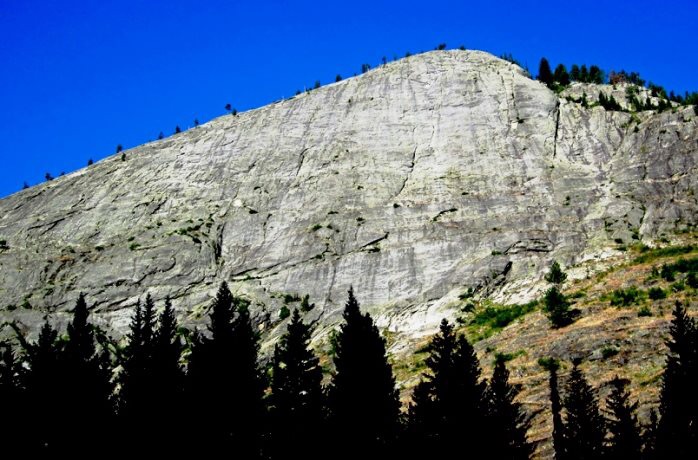
Slick Rock as viewed from Lick Creek Road. Ray Brooks Photo
Overall, the Three Cracks Route was more difficult, harder to protect, and much more run-out than in our memories of 30-plus years ago, when we thought of it as an “easy” route that we dragged novice climbers and girlfriends up. We now strongly suspect that in our 60s, we are not as tough or capable as we were in our 20s and 30s. I also believe that our memories of the run-out un-protectable sections were suppressed since they were not “pleasant memories. ” An adventure summary of our climb with Mark’s 70M rope. All of our previous ascents had been on 45M ropes so it was a “game-changer.”.
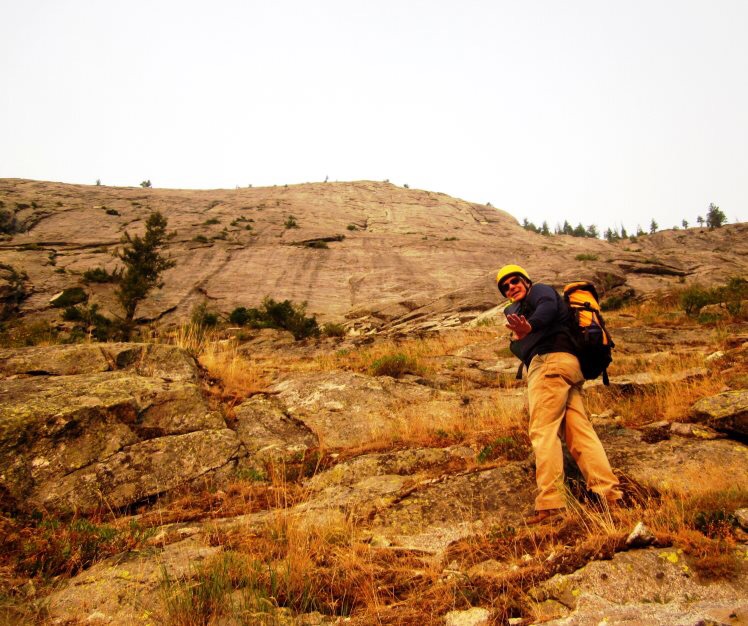
Mark approaching our route. Mark was a great partner on the route. He carried a pack (with our trail shoes, water, lunches, first aid kit, and much other crap) up the climb and was always encouraging. He also belayed me perfectly, gave me lots of slack rope and an occasional tight rope when I needed it. Ray Brooks Photo
Pitch 1. Left-facing corner/open book, well protected 5.5-5.6 to a large ledge that I recall had a decent crack for a belay. A belay crack was not found and I wandered across an un-protectable 5.0-5.5 slab for 100 feet or so to a 2-bolt belay. I think our earlier routes went up “run-out” steeper slabs to some cracks and tree belays.
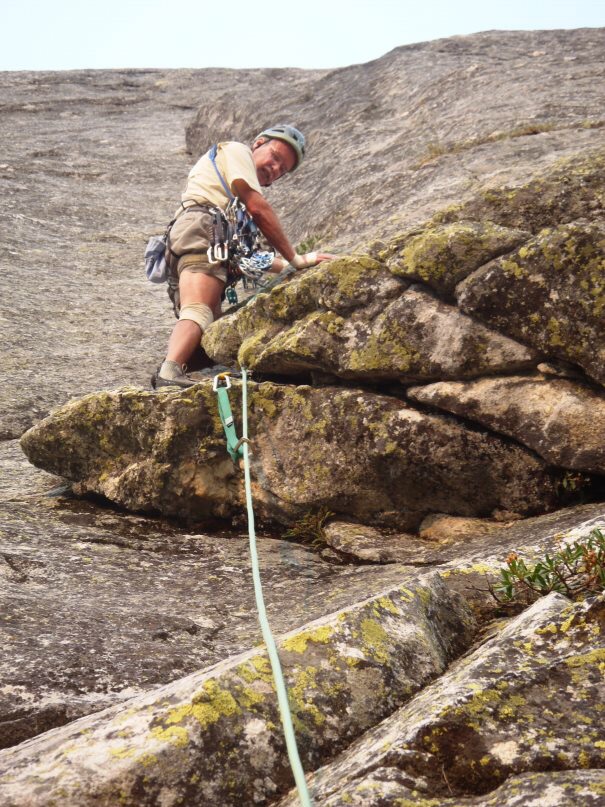
Ray starting the climb.
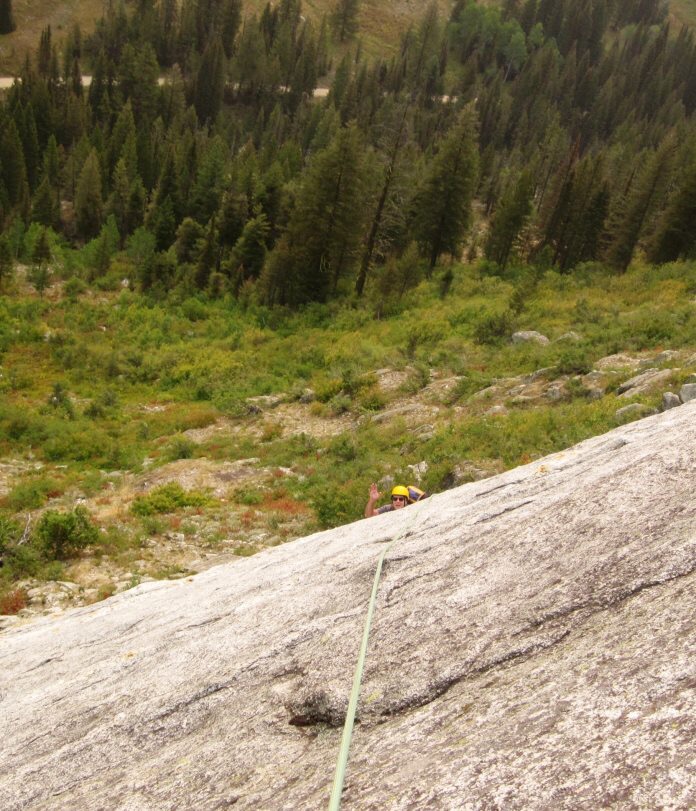
Mark on the run-out section to the bolt belay at the end of the first pitch. Ray Brooks Photo
Pitch 2. Easy climbing up and right over many big semi-loose, but currently stable, blocks to a tree belay. I missed a 2-bolt belay 20 feet lower.
Pitch 3. Easy climbing with no protection back along the upper edge of a huge downward-trending crack, then up towards the first crack.
Pitch 4. Slightly more difficult climbing up towards the first crack.
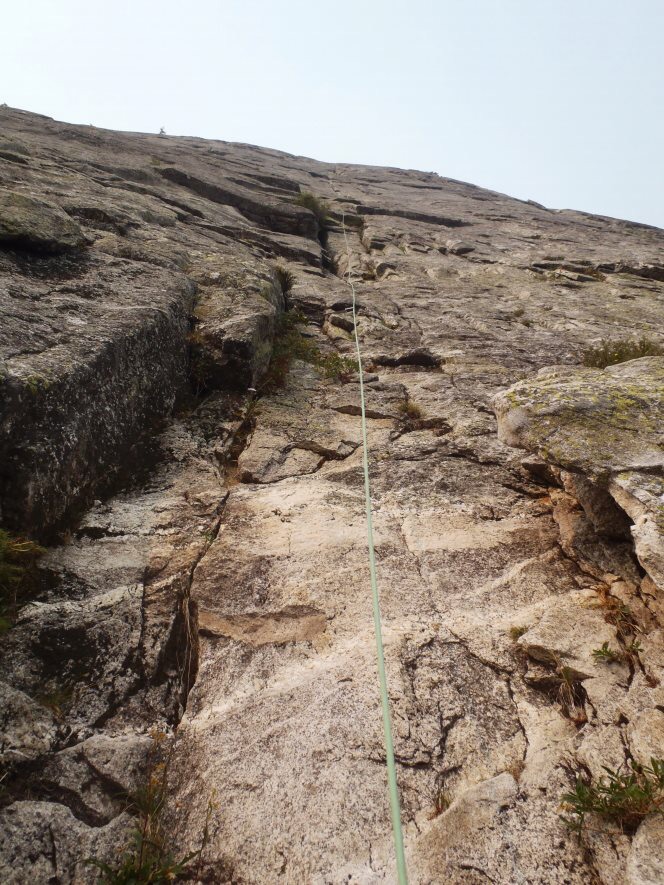
Mark’s rope view up Pitch 4 with me hidden. Ray Brooks Photo
Pitch 5. Up the first crack which was fun climbing with good protection.
Pitch 6. From high in the first crack, I scuttled across to the second crack and stepped in (I nearly jumped). The second crack is mostly a 12-18” wide groove with occasional spots for protection. Techniques used were mostly chimney and off-width variations. 5.7 crux where the crack ends for about 10 feet and I belayed a little ways above that. Although I had a great crack for belay anchors, the only pro that I had left that fit was a blue Camalot that I backed up with a wedged carabiner for that all important “2 pieces of protection, psychological belay”.
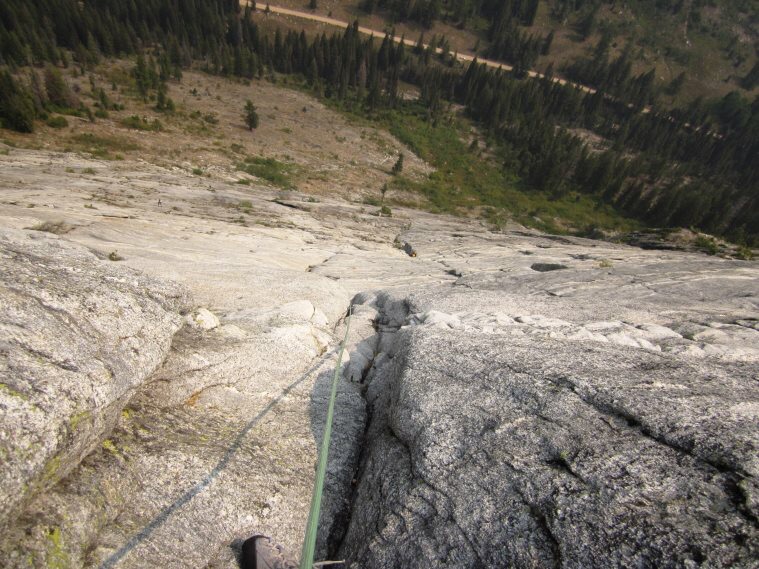
Looking down 70 meters to Mark (the yellow helmet) from the belay at the top of Pitch 6. Ray Brooks Photo
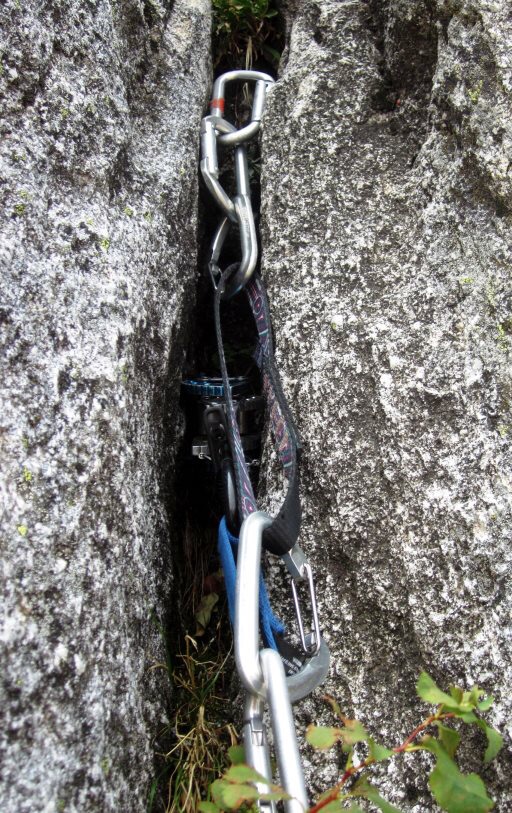
The belay anchor. Jim Donini got a lot of incredulous replies on the Supertopo.com forum with a comment about a single blue Camalot making an adequate belay anchor. Ray Brooks Photo
When Mark came up, I had him place another cam for a safer belay anchor and I was good to go. I soon stepped across to the 3rd crack and found it mostly pleasant lay-backing with an occasional more difficult spot. I climbed to what I believe is named “Lunch Ledge” at the top of the 3rd crack. This was where the original 1967 first ascent party spent a while until Harry Bowron boldly led on. After bringing Mark up, I looked up and could see absolutely no cracks for protection, just difficult looking run-out ground. Please remember that I have climbed this route numerous times and considered it “easy”.
Pitch 8. Meanwhile, 2 pleasant Washington State University students had just passed us on the closely adjacent 5.8+ Memorial Route which is a well-bolted Sport Route. It was so logical and easy to step across to a bolt on it and then to follow that route up some 5.8 climbing to a 2-bolt belay.
Pitch 9. Followed the bolt route for 2 more bolts then I could not see more bolts or any nearby cracks to the left in a 100-foot high blank slab that ended in a vertical headwall. The other climbers had not found any bolts in that section either. I told Mark that I was going back left to the original route but he talked me into following the line of no bolts. I traversed right on run-out 5.4-5.6 that had unfortunate occasional sandy spots. I became very aware that if I slipped badly on the impossible-to-see sand, I was going to take a 100-foot fall. I eventually reached a large un-protectable crack that provided all-important handholds and diagonaled back left to a large crack that led upward that I could protect. Then I traversed left under a steeper area and reached the top.
After looking at the above report, John Platt sent me this beta on how to finish the route without resorting to the bolted sport route.
“From the Lunch Shelf, head up a thin seam about 30 feet with little or no pro. There you will find a series of undercling flakes leading up and slightly left. The flakes offer good protection underneath. It’s about a pitch and a half to the top.”
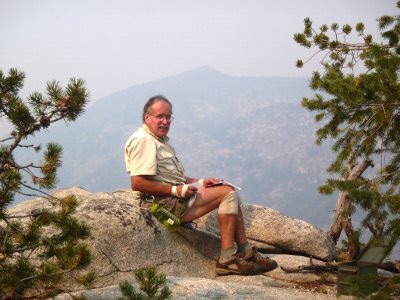
Ray signing the summit register.
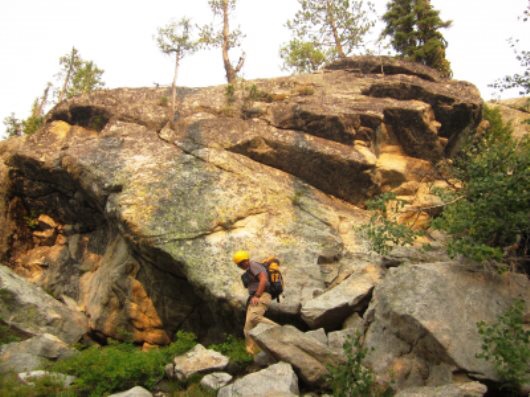
Mark after down-climbing from the summit dome to the descent gully. Ray Brooks Photo
The stats: Roped climbing time was about 7 hours. We descended climber’s left of Slick Rock. It was a “somewhat” safe descent but we suffered heavy vegetation and no trail on the lower third. Summit to car took 1 1/2 hours. Any areas on my bare legs that were not abraded on the ascent were scarred on the descent. Car to car took 10 hours.

Slick Rock Route Drawing (1982). Ray Brooks Photo
Our new rating for the route is 5.7R with the R for “Runout.”